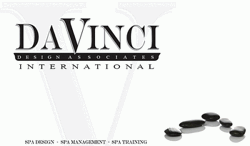
Automated External Defibrillators (AEDs)An automated external defibrillator or AED (sometimes known as an automatic external defibrillator) is a device that diagnoses potentially life threatening cardiac arrhythmias of ventricular fibrillation and ventricular tachycardia in a patient, and treats them through defibrillation. AEDs are designed to be simple to use for the layman, and the use of AEDs is taught in many first aid and CPR classes. AED UsageAn automated external defibrillator is used in cases of life threatening cardiac arrhythmias which have led to cardiac arrest. The rhythms the device will treat are usually limited to: * Ventricular fibrillation AEDs are designed to be used by laypersons who ideally should have received AED training. This is in contrast to more sophisticated manual and semi-automatic defibrillators used by health professionals, which can act as a pacemaker if the heart rate is too slow (bradycardia) and perform other functions which require a skilled operator able to read electrocardiograms. Automated external defibrillators can be either held by trained personnel or are public access units which can be found in public places including offices, shopping centers, airports and any other location where people may gather. Children as well as adults may fall victim to sudden cardiac arrest (SCA) so they should be available in schools as well. In many areas, emergency vehicles are likely to carry AEDs, with some ambulances carrying an AED in addition to manual defibrillators. Police or fire vehicles often carry an AED for first responder use. In order to make them highly visible, public access AEDs often are brightly colored, and are mounted in protective cases near the entrance of a building. When these protective cases are opened or the defibrillator is removed, some will sound a buzzer to alert nearby staff to their removal, though this does not necessarily summon emergency services; trained AED operators should know to phone for an ambulance when sending for or using an AED. A trend that is developing is the purchase of AEDs to be used in the home, particularly by those with known existing heart conditions. Typically, an AED kit will contain a face shield for providing a barrier between patient and first aider during rescue breathing; nitrile rubber gloves; trauma shears for cutting through clothing to expose the chest; a small towel for wiping away moisture on the skin, and a razor for shaving hairy chests. Mechanism of operationAn AED is called "external" because the electrode pads are applied to the bare chest of the victim, as opposed to internal defibrillators, which have electrodes surgically implanted inside the body. Automatic refers to the unit's ability to autonomously analyse the patient's condition, and to assist this, the vast majority of units have spoken prompts, and some may also have visual displays to instruct the user. Simplicity of useAll AEDs approved for use in the United States use an electronic voice to prompt users through each step. Because the user of an AED may be hearing impaired, many AEDs now include visual prompts as well. Most units are designed for use by non-medical operators. Their ease of use has given rise to the notion of public access defibrillation (PAD), which experts agree has the potential to be the single greatest advance in the treatment of out-of-hospital cardiac arrest since the invention of CPR.[9] LiabilityMany health professionals agree that automated external defibrillators are so easy to use that most states in the United States now include the "good faith" use of an AED by any person under the Good Samaritan laws. "Good faith" protection under a Good Samaritan law means that a volunteer responder cannot be held liable for the harm or death of a victim, given that the harm or death was not intentional and the responder was acting within the limits of their training and in good faith. In the United States, Good Samaritan laws provide some protection for the use of AEDs by trained and untrained responders. AEDs create little liability if used correctly; In addition to Good Samaritan laws, Ontario, Canada also has the "Chase McEachern Act (Heart Defibrillator Civil Liability), 2007 (Bill 171 – Subsection N)", which protects individuals from liability for damages that may occur from their use of an AED to save someone's life at the immediate scene of an emergency unless damages are caused by gross negligence. Indeed, at least one law suit has been filed where a business did NOT have appropriate defibrillation equipment and treatment available. Contact us now: Phone and Fax 800-284-4541 or please fill out the form below and we will respond to your enquiry. From outside the United States +1 561 414 3326 |
|
© 2008 - 2010 Da Vinci Design Associates AED, PAD and Defibrillator Consultants Authorized HeartSine Agents |
